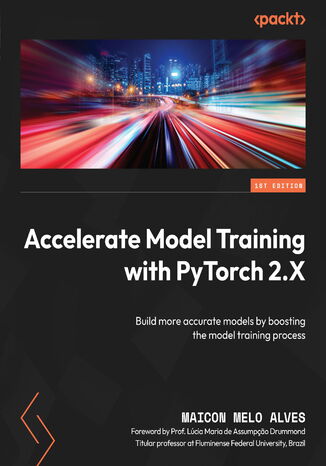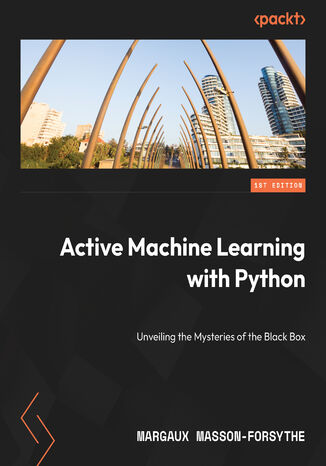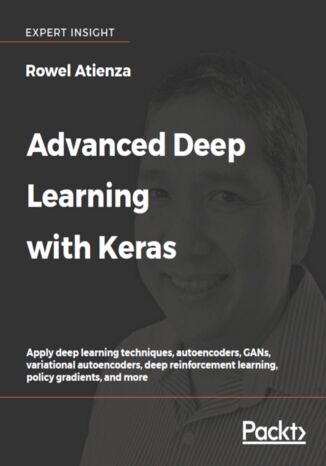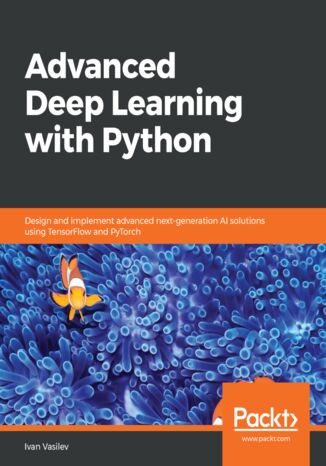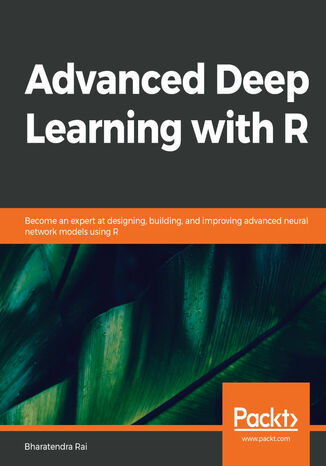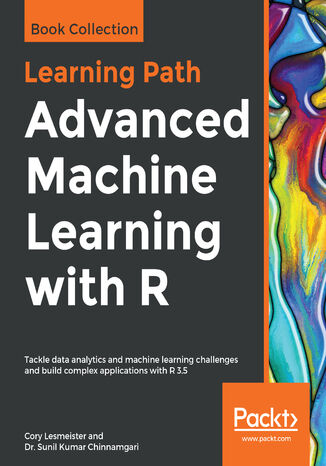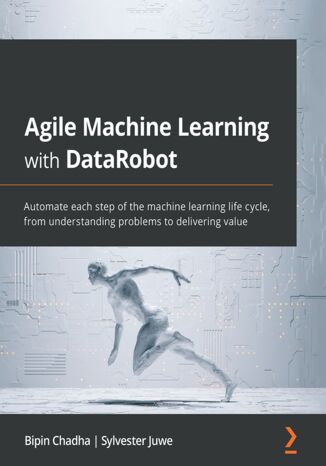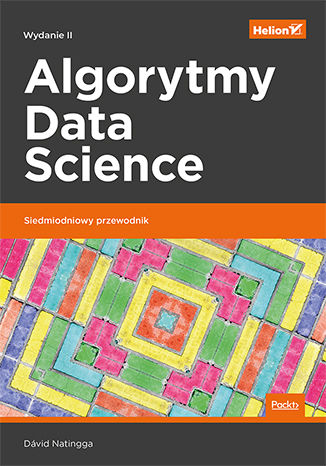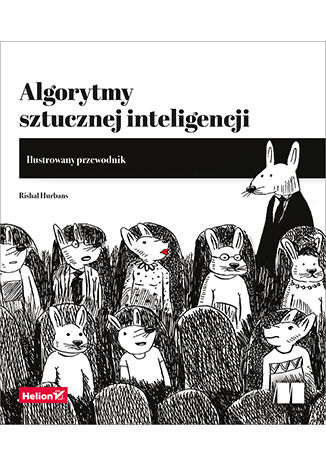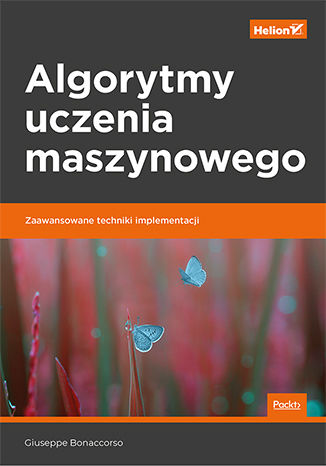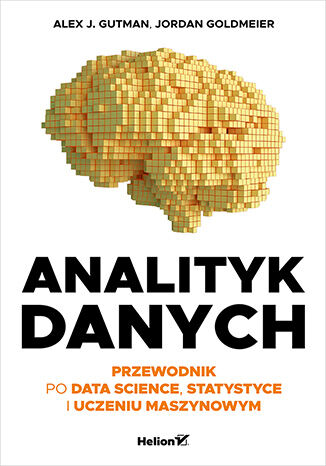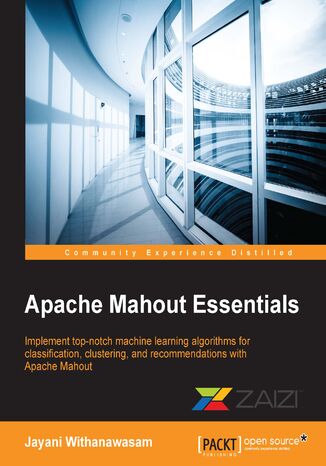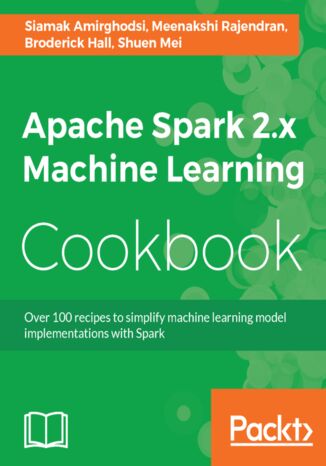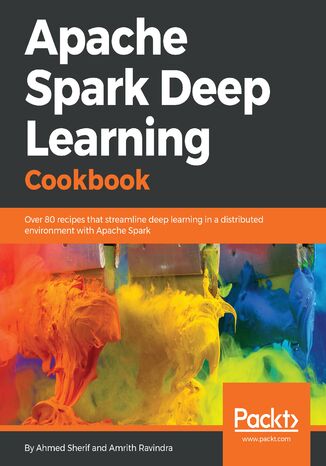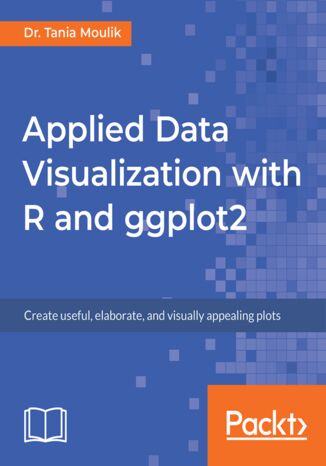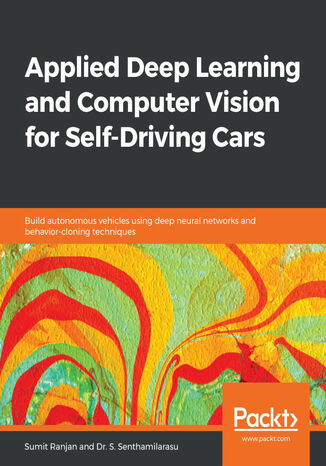Категорії
Електронні книги
-
Бізнес та економіка
- Біткойн
- Ділова жінка
- Коучинг
- Контроль
- Електронний бізнес
- Економіка
- Фінанси
- Фондова біржа та інвестиції
- Особисті компетенції
- Комп'ютер в офісі
- Комунікація та переговори
- Малий бізнес
- Маркетинг
- Мотивація
- Мультимедійне навчання
- Нерухомість
- Переконання та НЛП
- Податки
- Соціальна політика
- Порадники
- Презентації
- Лідерство
- Зв'язки з громадськістю
- Звіти, аналізи
- Секрет
- Соціальні засоби комунікації
- Продаж
- Стартап
- Ваша кар'єра
- Управління
- Управління проектами
- Людські ресурси (HR)
-
Для дітей
-
Для молоді
-
Освіта
-
Енциклопедії, словники
-
Електронна преса
- Architektura i wnętrza
- Biznes i Ekonomia
- Будинок та сад
- Електронний бізнес
- Фінанси
- Особисті фінанси
- Бізнес
- Фотографія
- Інформатика
- Відділ кадрів та оплата праці
- Комп'ютери, Excel
- Бухгалтерія
- Культура та література
- Наукові та академічні
- Охорона навколишнього середовища
- Впливові
- Освіта
- Податки
- Подорожі
- Психологія
- Релігія
- Сільське господарство
- Ринок книг і преси
- Транспорт та спедиція
- Здоров'я та краса
-
Історія
-
Інформатика
- Офісні застосунки
- Бази даних
- Біоінформатика
- Бізнес ІТ
- CAD/CAM
- Digital Lifestyle
- DTP
- Електроніка
- Цифрова фотографія
- Комп'ютерна графіка
- Ігри
- Хакування
- Hardware
- IT w ekonomii
- Наукові пакети
- Шкільні підручники
- Основи комп'ютера
- Програмування
- Мобільне програмування
- Інтернет-сервери
- Комп'ютерні мережі
- Стартап
- Операційні системи
- Штучний інтелект
- Технологія для дітей
- Вебмайстерність
-
Інше
-
Іноземні мови
-
Культура та мистецтво
-
Шкільні читанки
-
Література
- Антології
- Балада
- Біографії та автобіографії
- Для дорослих
- Драми
- Журнали, щоденники, листи
- Епос, епопея
- Нарис
- Наукова фантастика та фантастика
- Фельєтони
- Художня література
- Гумор, сатира
- Інше
- Класичний
- Кримінальний роман
- Нехудожня література
- Художня література
- Mity i legendy
- Лауреати Нобелівської премії
- Новели
- Побутовий роман
- Okultyzm i magia
- Оповідання
- Спогади
- Подорожі
- Оповідна поезія
- Поезія
- Політика
- Науково-популярна
- Роман
- Історичний роман
- Проза
- Пригодницька
- Журналістика
- Роман-репортаж
- Romans i literatura obyczajowa
- Сенсація
- Трилер, жах
- Інтерв'ю та спогади
-
Природничі науки
-
Соціальні науки
-
Шкільні підручники
-
Науково-популярна та академічна
- Археологія
- Bibliotekoznawstwo
- Кінознавство / Теорія кіно
- Філологія
- Польська філологія
- Філософія
- Finanse i bankowość
- Географія
- Економіка
- Торгівля. Світова економіка
- Історія та археологія
- Історія мистецтва і архітектури
- Культурологія
- Мовознавство
- літературні студії
- Логістика
- Математика
- Ліки
- Гуманітарні науки
- Педагогіка
- Навчальні засоби
- Науково-популярна
- Інше
- Психологія
- Соціологія
- Театральні студії
- Богослов’я
- Економічні теорії та науки
- Transport i spedycja
- Фізичне виховання
- Zarządzanie i marketing
-
Порадники
-
Ігрові посібники
-
Професійні та спеціальні порадники
-
Юридична
- Безпека життєдіяльності
- Історія
- Дорожній кодекс. Водійські права
- Юридичні науки
- Охорона здоров'я
- Загальне, компендіум
- Академічні підручники
- Інше
- Закон про будівництво і житло
- Цивільне право
- Фінансове право
- Господарське право
- Господарське та комерційне право
- Кримінальний закон
- Кримінальне право. Кримінальні злочини. Кримінологія
- Міжнародне право
- Міжнародне та іноземне право
- Закон про охорону здоров'я
- Закон про освіту
- Податкове право
- Трудове право та законодавство про соціальне забезпечення
- Громадське, конституційне та адміністративне право
- Кодекс про шлюб і сім'ю
- Аграрне право
- Соціальне право, трудове право
- Законодавство Євросоюзу
- Промисловість
- Сільське господарство та захист навколишнього середовища
- Словники та енциклопедії
- Державні закупівлі
- Управління
-
Путівники та подорожі
- Африка
- Альбоми
- Південна Америка
- Центральна та Північна Америка
- Австралія, Нова Зеландія, Океанія
- Австрія
- Азії
- Балкани
- Близький Схід
- Болгарія
- Китай
- Хорватія
- Чеська Республіка
- Данія
- Єгипет
- Європа
- Франція
- Гори
- Греція
- Іспанія
- Нідерланди
- Ісландія
- Литва
- Mapy, Plany miast, Atlasy
- Мініпутівники
- Німеччина
- Норвегія
- Активні подорожі
- Польща
- Португалія
- Інше
- Росія
- Румунія
- Словаччина
- Словенія
- Швейцарія
- Швеція
- Світ
- Туреччина
- Україна
- Угорщина
- Велика Британія
- Італія
-
Психологія
- Філософія життя
- Kompetencje psychospołeczne
- Міжособистісне спілкування
- Mindfulness
- Загальне
- Переконання та НЛП
- Академічна психологія
- Психологія душі та розуму
- Психологія праці
- Relacje i związki
- Батьківство та дитяча психологія
- Вирішення проблем
- Інтелектуальний розвиток
- Секрет
- Сексуальність
- Спокушання
- Зовнішній вигляд та імідж
- Філософія життя
-
Релігія
-
Спорт, фітнес, дієти
-
Техніка і механіка
Аудіокниги
-
Бізнес та економіка
- Біткойн
- Ділова жінка
- Коучинг
- Контроль
- Електронний бізнес
- Економіка
- Фінанси
- Фондова біржа та інвестиції
- Особисті компетенції
- Комунікація та переговори
- Малий бізнес
- Маркетинг
- Мотивація
- Нерухомість
- Переконання та НЛП
- Податки
- Порадники
- Презентації
- Лідерство
- Зв'язки з громадськістю
- Секрет
- Соціальні засоби комунікації
- Продаж
- Стартап
- Ваша кар'єра
- Управління
- Управління проектами
- Людські ресурси (HR)
-
Для дітей
-
Для молоді
-
Освіта
-
Енциклопедії, словники
-
Історія
-
Інформатика
-
Інше
-
Іноземні мови
-
Культура та мистецтво
-
Шкільні читанки
-
Література
- Антології
- Балада
- Біографії та автобіографії
- Для дорослих
- Драми
- Журнали, щоденники, листи
- Епос, епопея
- Нарис
- Наукова фантастика та фантастика
- Фельєтони
- Художня література
- Гумор, сатира
- Інше
- Класичний
- Кримінальний роман
- Нехудожня література
- Художня література
- Mity i legendy
- Лауреати Нобелівської премії
- Новели
- Побутовий роман
- Okultyzm i magia
- Оповідання
- Спогади
- Подорожі
- Поезія
- Політика
- Науково-популярна
- Роман
- Історичний роман
- Проза
- Пригодницька
- Журналістика
- Роман-репортаж
- Romans i literatura obyczajowa
- Сенсація
- Трилер, жах
- Інтерв'ю та спогади
-
Природничі науки
-
Соціальні науки
-
Науково-популярна та академічна
-
Порадники
-
Професійні та спеціальні порадники
-
Юридична
-
Путівники та подорожі
-
Психологія
- Філософія життя
- Міжособистісне спілкування
- Mindfulness
- Загальне
- Переконання та НЛП
- Академічна психологія
- Психологія душі та розуму
- Психологія праці
- Relacje i związki
- Батьківство та дитяча психологія
- Вирішення проблем
- Інтелектуальний розвиток
- Секрет
- Сексуальність
- Спокушання
- Зовнішній вигляд та імідж
- Філософія життя
-
Релігія
-
Спорт, фітнес, дієти
-
Техніка і механіка
Відеокурси
-
Бази даних
-
Big Data
-
Бізнес та економіка
-
Кібербезпека
-
Data Science
-
DevOps
-
Для дітей
-
Електроніка
-
Графіка / Відео / CAX
-
Ігри
-
Microsoft Office
-
Інструменти розробки
-
Програмування
-
Особистісний розвиток
-
Комп'ютерні мережі
-
Операційні системи
-
Тестування програмного забезпечення
-
Мобільні пристрої
-
UX/UI
-
Веброзробка, Web development
Подкасти
- Електронні книги
- Big data (Великі дані)
- Машинне навчання
Машинне навчання
Maicon Melo Alves, Lúcia Maria de Assumpçao Drummond
Penned by an expert in High-Performance Computing (HPC) with over 25 years of experience, this book is your guide to enhancing the performance of model training using PyTorch, one of the most widely adopted machine learning frameworks.You’ll start by understanding how model complexity impacts training time before discovering distinct levels of performance tuning to expedite the training process. You’ll also learn how to use a new PyTorch feature to compile the model and train it faster, alongside learning how to benefit from specialized libraries to optimize the training process on the CPU. As you progress, you’ll gain insights into building an efficient data pipeline to keep accelerators occupied during the entire training execution and explore strategies for reducing model complexity and adopting mixed precision to minimize computing time and memory consumption. The book will get you acquainted with distributed training and show you how to use PyTorch to harness the computing power of multicore systems and multi-GPU environments available on single or multiple machines. By the end of this book, you’ll be equipped with a suite of techniques, approaches, and strategies to speed up training , so you can focus on what really matters—building stunning models!
Building accurate machine learning models requires quality data—lots of it. However, for most teams, assembling massive datasets is time-consuming, expensive, or downright impossible. Led by Margaux Masson-Forsythe, a seasoned ML engineer and advocate for surgical data science and climate AI advancements, this hands-on guide to active machine learning demonstrates how to train robust models with just a fraction of the data using Python's powerful active learning tools.You’ll master the fundamental techniques of active learning, such as membership query synthesis, stream-based sampling, and pool-based sampling and gain insights for designing and implementing active learning algorithms with query strategy and Human-in-the-Loop frameworks. Exploring various active machine learning techniques, you’ll learn how to enhance the performance of computer vision models like image classification, object detection, and semantic segmentation and delve into a machine AL method for selecting the most informative frames for labeling large videos, addressing duplicated data. You’ll also assess the effectiveness and efficiency of active machine learning systems through performance evaluation.By the end of the book, you’ll be able to enhance your active learning projects by leveraging Python libraries, frameworks, and commonly used tools.
Recent developments in deep learning, including Generative Adversarial Networks (GANs), Variational Autoencoders (VAEs), and Deep Reinforcement Learning (DRL) are creating impressive AI results in our news headlines - such as AlphaGo Zero beating world chess champions, and generative AI that can create art paintings that sell for over $400k because they are so human-like.Advanced Deep Learning with Keras is a comprehensive guide to the advanced deep learning techniques available today, so you can create your own cutting-edge AI. Using Keras as an open-source deep learning library, you'll find hands-on projects throughout that show you how to create more effective AI with the latest techniques.The journey begins with an overview of MLPs, CNNs, and RNNs, which are the building blocks for the more advanced techniques in the book. You’ll learn how to implement deep learning models with Keras and TensorFlow 1.x, and move forwards to advanced techniques, as you explore deep neural network architectures, including ResNet and DenseNet, and how to create autoencoders. You then learn all about GANs, and how they can open new levels of AI performance. Next, you’ll get up to speed with how VAEs are implemented, and you’ll see how GANs and VAEs have the generative power to synthesize data that can be extremely convincing to humans - a major stride forward for modern AI. To complete this set of advanced techniques, you'll learn how to implement DRL such as Deep Q-Learning and Policy Gradient Methods, which are critical to many modern results in AI.
In order to build robust deep learning systems, you’ll need to understand everything from how neural networks work to training CNN models. In this book, you’ll discover newly developed deep learning models, methodologies used in the domain, and their implementation based on areas of application. You’ll start by understanding the building blocks and the math behind neural networks, and then move on to CNNs and their advanced applications in computer vision. You'll also learn to apply the most popular CNN architectures in object detection and image segmentation. Further on, you’ll focus on variational autoencoders and GANs. You’ll then use neural networks to extract sophisticated vector representations of words, before going on to cover various types of recurrent networks, such as LSTM and GRU. You’ll even explore the attention mechanism to process sequential data without the help of recurrent neural networks (RNNs). Later, you’ll use graph neural networks for processing structured data, along with covering meta-learning, which allows you to train neural networks with fewer training samples. Finally, you’ll understand how to apply deep learning to autonomous vehicles.By the end of this book, you’ll have mastered key deep learning concepts and the different applications of deep learning models in the real world.
Deep learning is a branch of machine learning based on a set of algorithms that attempt to model high-level abstractions in data. Advanced Deep Learning with R will help you understand popular deep learning architectures and their variants in R, along with providing real-life examples for them. This deep learning book starts by covering the essential deep learning techniques and concepts for prediction and classification. You will learn about neural networks, deep learning architectures, and the fundamentals for implementing deep learning with R. The book will also take you through using important deep learning libraries such as Keras-R and TensorFlow-R to implement deep learning algorithms within applications. You will get up to speed with artificial neural networks, recurrent neural networks, convolutional neural networks, long short-term memory networks, and more using advanced examples. Later, you'll discover how to apply generative adversarial networks (GANs) to generate new images; autoencoder neural networks for image dimension reduction, image de-noising and image correction and transfer learning to prepare, define, train, and model a deep neural network. By the end of this book, you will be ready to implement your knowledge and newly acquired skills for applying deep learning algorithms in R through real-world examples.
Cory Lesmeister, Dr. Sunil Kumar Chinnamgari
R is one of the most popular languages when it comes to exploring the mathematical side of machine learning and easily performing computational statistics. This Learning Path shows you how to leverage the R ecosystem to build efficient machine learning applications that carry out intelligent tasks within your organization. You’ll work through realistic projects such as building powerful machine learning models with ensembles to predict employee attrition. Next, you’ll explore different clustering techniques to segment customers using wholesale data and even apply TensorFlow and Keras-R for performing advanced computations. Each chapter will help you implement advanced machine learning algorithms using real-world examples. You’ll also be introduced to reinforcement learning along with its use cases and models. Finally, this Learning Path will provide you with a glimpse into how some of these black box models can be diagnosed and understood. By the end of this Learning Path, you’ll be equipped with the skills you need to deploy machine learning techniques in your own projects.
DataRobot enables data science teams to become more efficient and productive. This book helps you to address machine learning (ML) challenges with DataRobot's enterprise platform, enabling you to extract business value from data and rapidly create commercial impact for your organization.You'll begin by learning how to use DataRobot's features to perform data prep and cleansing tasks automatically. The book then covers best practices for building and deploying ML models, along with challenges faced while scaling them to handle complex business problems. Moving on, you'll perform exploratory data analysis (EDA) tasks to prepare your data to build ML models and ways to interpret results. You'll also discover how to analyze the model's predictions and turn them into actionable insights for business users. Next, you'll create model documentation for internal as well as compliance purposes and learn how the model gets deployed as an API. In addition, you'll find out how to operationalize and monitor the model's performance. Finally, you'll work with examples on time series forecasting, NLP, image processing, MLOps, and more using advanced DataRobot capabilities.By the end of this book, you'll have learned to use DataRobot's AutoML and MLOps features to scale ML model building by avoiding repetitive tasks and common errors.
Algorytmy Data Science. Siedmiodniowy przewodnik. Wydanie II
Data science jest interdyscyplinarną dziedziną naukową łączącą osiągnięcia uczenia maszynowego, statystyki i eksploracji danych. Umożliwia wydobywanie nowej wiedzy z istniejących danych poprzez stosowanie odpowiednich algorytmów i analizy statystycznej. Stworzono dotąd wiele algorytmów tej kategorii i wciąż powstają nowe. Stanowią one podstawę konstruowania modeli umożliwiających wyodrębnianie określonych informacji z danych odzwierciedlających zjawiska zachodzące w świecie rzeczywistym, pozwalają też na formułowanie prognoz ich przebiegu w przyszłości. Algorytmy data science są postrzegane jako ogromna szansa na zdobycie przewagi konkurencyjnej, a ich znaczenie stale rośnie. Ta książka jest zwięzłym przewodnikiem po algorytmach uczenia maszynowego. Jej cel jest prosty: w ciągu siedmiu dni masz opanować solidne podstawy siedmiu najważniejszych dla uczenia maszynowego algorytmów. Opisom poszczególnych algorytmów towarzyszą przykłady ich implementacji w języku Python, a praktyczne ćwiczenia, które znajdziesz na końcu każdego rozdziału, ułatwią Ci lepsze zrozumienie omawianych zagadnień. Co więcej, dzięki książce nauczysz się właściwie identyfikować problemy z zakresu data science. W konsekwencji dobieranie odpowiednich metod i narzędzi do ich rozwiązywania okaże się dużo łatwiejsze. W tej książce: efektywne implementacje algorytmów uczenia maszynowego w języku Python klasyfikacja danych przy użyciu twierdzenia Bayesa, drzew decyzyjnych i lasów losowych podział danych na klastery za pomocą algorytmu k-średnich stosowanie analizy regresji w parametryzacji modeli przewidywań analiza szeregów czasowych pod kątem trendów i sezonowości danych Algorytmy data science: poznaj, zrozum, zastosuj!
Algorytmy sztucznej inteligencji. Ilustrowany przewodnik
Sztuczna inteligencja ma umożliwiać wykorzystywanie danych i algorytmów do podejmowania lepszych decyzji, rozwiązywania trudnych problemów i automatyzowania złożonych zadań. Ma też zwiększać produktywność człowieka. Obecnie sztuczna inteligencja z rozmachem wkracza do kolejnych dziedzin. Budzi zachwyt, ale też kontrowersje i obawy. Nowe narzędzia, choćby były tworzone z najlepszymi intencjami, zawsze mogą zostać wykorzystane w niewłaściwy czy szkodliwy sposób. Oznacza to, że każdy, kto rozwija nowe technologie, powinien to robić odpowiedzialnie. Aby to było możliwe, trzeba dobrze zrozumieć podstawy działania sztucznej inteligencji - algorytmy. To praktyczny przewodnik po algorytmach sztucznej inteligencji. Skorzystają z niego programiści i inżynierowie, którzy chcą zrozumieć zagadnienia i algorytmy związane ze sztuczną inteligencją na podstawie praktycznych przykładów i wizualnych wyjaśnień. Książka pokazuje, jak radzić sobie z takimi zadaniami programistycznymi jak wykrywanie oszustw bankowych czy sterowanie pojazdem autonomicznym. Pierwsze rozdziały dotyczą podstawowych koncepcji i algorytmów i stają się punktem wyjścia do bardziej złożonych tematów: wydajnych algorytmów przeszukiwania oraz poszukiwania rozwiązań w środowisku konkurencyjnym. Przedstawiono tu zagadnienia uczenia maszynowego, w tym proces przygotowania danych, modelowania i testowania. Omówiono też zasady uczenia przez wzmacnianie za pomocą algorytmu Q-learning. W książce: kategorie i znaczenie algorytmów sztucznej inteligencji. inteligentne przeszukiwanie w procesie podejmowania decyzji algorytmy genetyczne i inteligencja rozproszona uczenie maszynowe i sieci neuronowe uczenie przez wzmacnianie Zrozum algorytmy, a pojmiesz istotę sztucznej inteligencji!
Algorytmy uczenia maszynowego. Zaawansowane techniki implementacji
Imponujący rozwój standardowych algorytmów przy ciągłej obniżce cen sprzętu i udostępnianiu coraz to szybszych komponentów przyczynił się do zrewolucjonizowania wielu gałęzi przemysłu. Obecnie uczenie maszynowe pozwala automatyzować procesy, które do niedawna musiały być zarządzane przez człowieka. Zadania, które jeszcze dekadę temu stanowiły nieprzekraczalną przeszkodę, dziś są wykonywane przez zwykły komputer osobisty. W efekcie dzięki technologii oraz dostępnym wysokopoziomowym otwartym platformom każdy, kto zainteresuje się uczeniem maszynowym, może projektować i wdrażać niezwykle potężne modele. Celem tej książki jest przybliżenie profesjonalistom tajników złożonych algorytmów uczenia maszynowego i zasad ich stosowania w praktyce. Poza praktycznymi informacjami dotyczącymi działania algorytmów i ich wdrożeń znalazły się tu również niezbędne podstawy teoretyczne. Opisano klasyczne modele uczenia nadzorowanego, nienadzorowanego i półnadzorowanego. Wskazano, w jakich sytuacjach okazują się one najbardziej przydatne. Zaprezentowano techniki wydobywania danych za pomocą modeli bayesowskich, algorytmu MCMC, a także dzięki stosowaniu ukrytych modeli Markowa. Omówiono zestaw przydatnych do uczenia maszynowego narzędzi, takich jak biblioteki: scikit-learn, Keras i TensorFlow. Najciekawsze zagadnienia: najważniejsze koncepcje teoretyczne uczenia maszynowego modelowanie probabilistyczne i uczenie hebbowskie zaawansowane koncepcje modeli neuronowych modele generatywne, takie jak splotowe sieci GAN i sieci Wassersteina głębokie sieci przekonań zaawansowane algorytmy: TD(tylda), aktor-krytyk, SARSA i Q-uczenie Uczenie maszynowe - już dziś zaimplementuj rozwiązania przyszłości!
Analityk danych. Przewodnik po data science, statystyce i uczeniu maszynowym
Musisz spojrzeć prawdzie w oczy: epoka danych to nie tylko imponujące możliwości, ale również obietnice bez pokrycia. Firmy wdrażają rozwiązania, które mają je wyręczać w podejmowaniu decyzji. Menedżerowie zatrudniają analityków, którzy nimi nie są. Specjaliści w dziedzinie data science są zatrudniani w organizacjach, które nie są na nich gotowe. Dyrektorzy wysłuchują technicznego żargonu i udają, że go rozumieją. Efekt? Pieniądze idą w błoto. Oto praktyczny przewodnik po nauce o danych w miejscu pracy. Dowiesz się stąd wszystkiego, co ważne na początku Twojej drogi jako danologa: od osobowości, z którymi przyjdzie Ci pracować, przez detale analizy danych, po matematykę stojącą za algorytmami i uczeniem maszynowym. Nauczysz się myśleć krytycznie o danych i otrzymanych wynikach, będziesz też inteligentnie o tym mówić. Jednym zdaniem: zrozumiesz dane i związane z nimi wyzwania na głębszym, profesjonalnym poziomie. To książka dla każdego, kto chce przestawić firmę na tory data science. Eric Weber, kierownik ds. eksperymentów i badań metrycznych, Yelp Naucz się: myśleć statystycznie i rozumieć rolę zmienności w podejmowaniu decyzji zadawać właściwe pytania na temat statystyk i wyników analiz sensownie korzystać z rozwiązań uczenia maszynowego i sztucznej inteligencji unikać typowych błędów podczas pracy z danymi i ich interpretowania Data science? Odsiejesz piasek od złota!
Siamak Amirghodsi, Shuen Mei, Meenakshi Rajendran, Broderick Hall
Machine learning aims to extract knowledge from data, relying on fundamental concepts in computer science, statistics, probability, and optimization. Learning about algorithms enables a wide range of applications, from everyday tasks such as product recommendations and spam filtering to cutting edge applications such as self-driving cars and personalized medicine. You will gain hands-on experience of applying these principles using Apache Spark, a resilient cluster computing system well suited for large-scale machine learning tasks.This book begins with a quick overview of setting up the necessary IDEs to facilitate the execution of code examples that will be covered in various chapters. It also highlights some key issues developers face while working with machine learning algorithms on the Spark platform. We progress by uncovering the various Spark APIs and the implementation of ML algorithms with developing classification systems, recommendation engines, text analytics, clustering, and learning systems. Toward the final chapters, we’ll focus on building high-end applications and explain various unsupervised methodologies and challenges to tackle when implementing with big data ML systems.
Organizations these days need to integrate popular big data tools such as Apache Spark with highly efficient deep learning libraries if they’re looking to gain faster and more powerful insights from their data. With this book, you’ll discover over 80 recipes to help you train fast, enterprise-grade, deep learning models on Apache Spark.Each recipe addresses a specific problem, and offers a proven, best-practice solution to difficulties encountered while implementing various deep learning algorithms in a distributed environment. The book follows a systematic approach, featuring a balance of theory and tips with best practice solutions to assist you with training different types of neural networks such as convolutional neural networks (CNNs) and recurrent neural networks (RNNs). You’ll also have access to code written in TensorFlow and Keras that you can run on Spark to solve a variety of deep learning problems in computer vision and natural language processing (NLP), or tweak to tackle other problems encountered in deep learning.By the end of this book, you'll have the skills you need to train and deploy state-of-the-art deep learning models on Apache Spark.
Applied Data Visualization with R and ggplot2 introduces you to the world of data visualization by taking you through the basic features of ggplot2. To start with, you’ll learn how to set up the R environment, followed by getting insights into the grammar of graphics and geometric objects before you explore the plotting techniques.You’ll discover what layers, scales, coordinates, and themes are, and study how you can use them to transform your data into aesthetical graphs. Once you’ve grasped the basics, you’ll move on to studying simple plots such as histograms and advanced plots such as superimposing and density plots. You’ll also get to grips with plotting trends, correlations, and statistical summaries.By the end of this book, you’ll have created data visualizations that will impress your clients.
Thanks to a number of recent breakthroughs, self-driving car technology is now an emerging subject in the field of artificial intelligence and has shifted data scientists' focus to building autonomous cars that will transform the automotive industry. This book is a comprehensive guide to use deep learning and computer vision techniques to develop autonomous cars. Starting with the basics of self-driving cars (SDCs), this book will take you through the deep neural network techniques required to get up and running with building your autonomous vehicle. Once you are comfortable with the basics, you'll delve into advanced computer vision techniques and learn how to use deep learning methods to perform a variety of computer vision tasks such as finding lane lines, improving image classification, and so on. You will explore the basic structure and working of a semantic segmentation model and get to grips with detecting cars using semantic segmentation. The book also covers advanced applications such as behavior-cloning and vehicle detection using OpenCV, transfer learning, and deep learning methodologies to train SDCs to mimic human driving.By the end of this book, you'll have learned how to implement a variety of neural networks to develop your own autonomous vehicle using modern Python libraries.

